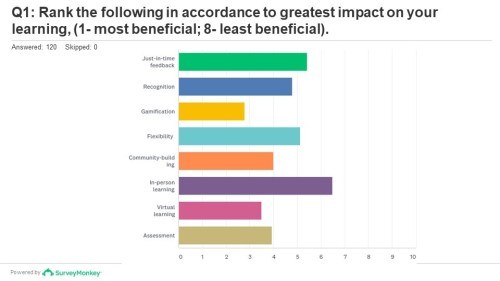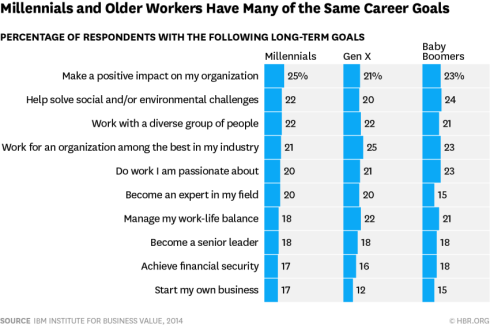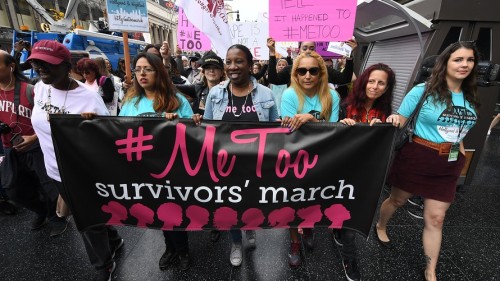7/24/2018
By: Emily VanZoest, Client Relations and Product Development Lead, Paragon Leadership International (Gen Y)
Olivia Reckley, Marketing and Communications Intern, Paragon Leadership International (Gen Z)

“If you want to view paradise, simply look around and view it. Anything you want to, do it; want to change the world… there’s nothing to it.”- Willie Wonka
Next generation leaders value having a purpose over a paycheck. They want to make a difference. They want on-demand and quick feedback. And they want to be engaged and grow within their organizations. One study showed that 91% of millennials aspire to reach leadership positions, but there is still dissatisfaction with how leadership skills are being developed internally.
We know the struggle. One of us will be entering the workforce soon and is learning what it means to be engaged, and the other is a millennial who has left 2 jobs in 2 and a half years.
We know what next generation leaders want and need to be successful, but how do we get there? What best practices should be followed to provide the most valuable professional development offerings?
Paragon Leadership International surveyed over 100 Gen Y (born 1981-1996), also known as millennials, and Gen-Z (born 1997-Present) young professionals, to determine what they value most from professional development opportunities, and what contributes the most to their learning.
They Want In-Person Learning
In our study, we asked millennials and Gen Z professionals to rank various terms and phrases in accordance to greatest impact on their learning, and 47% of respondents reported that in-person learning contributed the most to their learning. In-person interaction “is the best way to learn, communicate, and attain memories” and build substantive, long-lasting relationships. Paragon noted the shift away from virtual learning, contrary to theory that online learning has become a convenient and affordable way to expand skills for their job or career.

Paragon Next Generation Survey, 2018
They Want Just-In-Time (On-Demand) Feedback
The next generation of leaders thrive on frequent or constant, specific, and meaningful feedback that allows them to be a part of a continuing conversation. Of the 109 responses, 59 individuals ranked “Just-in-time Feedback” as one of the top three most beneficial contributors to their learning.
Olivia: “As a student-athlete at Wellesley College, a summer intern at Paragon, and a Gen Z, I truly value on-demand feedback in the workplace, school setting, and athletics. It forces me to stay on top of the task at hand. When I’m playing soccer, my coach tells me what I should and should not do; Getting the information quickly will help me improve my play and my teammates. At school and when I’m working, the quick feedback from professors and colleagues lets me accomplish multiple tasks at a faster rate. This makes me feel that I am contributing, rather than focusing too long on one specific subject.”

They believe the most beneficial development opportunities for them, would provide the most ROI for their companies
When asked what kinds of development opportunities would benefit them as a next generation leader, 66 of 120 respondents said flexible, brief sessions that focus on micro-skill development would be most beneficial for them. These sessions would incorporate feedback, and recognition from peers and from their leaders. Participants also thought that internal project-based team development would be beneficial for their learning, if it is focused on a purpose or social cause.
This dedication to social and environmental challenges spans across generations in the workforce, as do many other long-term goals for individuals in the workplace, like working with diverse groups of people, making a positive impact in one’s organization, and working for a top company within one’s industry.

When we asked what would be most beneficial for their company to implement to develop next generation leaders, 71 of 120 respondents had similar sentiments to what would benefit them individually.
Next generation leaders want a purpose. They want quick, meaningful engagements. They want feedback on how they are improving.
That’s how next generation leaders will earn their golden ticket.
Paragon Leadership needs Millennial or Gen Z next generation leaders who want to make a difference in their companies. Get in touch with us by completing our contact form https://www.surveymonkey.com/r/paragonnextgeneration.
Look for Paragon’s new website coming in mid-August.

 Source
Source Source
Source Source
Source Written by: McKenzie Borland, Intern at
Written by: McKenzie Borland, Intern at